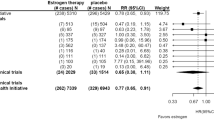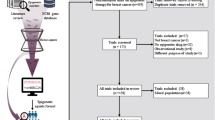Abstract
Estrogen receptor (ER) antagonists, such as tamoxifen and toremifene, are widely used as adjuvant therapies for ER-positive breast cancer. These agents sometimes cause hepatosteatosis and steatohepatitis and it is problematic whether these agents should be withdrawn due to fatty liver disease and liver dysfunction. We herein describe a patient with fatty liver disease and hypertriglyceridemia during tamoxifen treatment, which significantly improved by adding pemafibrate, a novel PPARα activator designated as a selective PPARα modulator. Serial analysis during pemafibrate treatment revealed significant increases in circulating ketone bodies, which are indicators of hepatic fatty acid (FA) β-oxidation. As far as we know, this is the first report demonstrating the beneficial effect of pemafibrate on tamoxifen-induced fatty liver disease, which is likely due to enhanced hepatic FA β-oxidation by PPARα stimulation. Future large-scale studies will be needed to verify the current observation.



Similar content being viewed by others
References
Pratt DS, Knox TA, Erban J. Tamoxifen-induced steatohepatitis. Ann Intern Med. 1995;123:236.
Pinto HC, Baptista A, Camilo ME, et al. Tamoxifen-associated steatohepatitis: report of three cases. J Hepatol. 1995;23:95–7.
Van Hoof M, Rahier J, Horsmans Y. Tamoxifen-Induced steatohepatitis. Ann Intern Med. 1996;124:855–6.
Ogawa Y, Murata Y, Nishioka A, et al. Tamoxifen-induced fatty liver in patients with breast cancer. Lancet. 1998;351:725.
Oien KA, Moffat D, Curry GW, et al. Cirrhosis with steatohepatitis after adjuvant tamoxifen. Lancet. 1999;353:36–7.
Tanaka N, Aoyama T, Kimura S, et al. Targeting nuclear receptors for the treatment of fatty liver disease. Pharmacol Ther. 2017;179:142–57.
Wang Y, Nakajima T, Gonzalez FJ, et al. PPARs as metabolic regulators in the liver: lessons from liver-specific PPAR-null mice. Int J Mol Sci. 2020;17:21.
Fruchart JC, Hermans MP, Fruchart-Najib J, et al. Selective peroxisome proliferator-activated receptor alpha modulators (SPPARMα) in the metabolic syndrome: is pemafibrate light at the end of the tunnel? Curr Atheroscler Rep. 2021;23:3.
Cole LK, Jacobs RL, Vance DE. Tamoxifen induces triacylglycerol accumulation in the mouse liver by activation of fatty acid synthesis. Hepatology. 2010;52:1258–65.
Birzniece V, Barrett PHR, Ho KKY. Tamoxifen reduces hepatic VLDL production and GH secretion in women: a possible mechanism for steatosis development. Eur J Endocrinol. 2017;177:137–43.
Yang M, Liu Q, Huang T, et al. Dysfunction of estrogen-related receptor alpha-dependent hepatic VLDL secretion contributes to sex disparity in NAFLD/NASH development. Theranostics. 2020;10:10874–91.
Saibara T, Onishi S, Ogawa Y, et al. Bezafibrate for tamoxifen-induced non-alcoholic steatohepatitis. Lancet. 1999;353:1802.
Nakajima T, Tanaka N, Kanbe H, et al. Bezafibrate at clinically relevant doses decreases serum/liver triglycerides via down-regulation of sterol regulatory element-binding protein-1c in mice: a novel peroxisome proliferator-activated receptor alpha-independent mechanism. Mol Pharmacol. 2009;75:782–92.
Nakajima T, Tanaka N, Sugiyama E, et al. Cholesterol-lowering effect of bezafibrate is independent of peroxisome proliferator-activated receptor activation in mice. Biochem Pharmacol. 2008;76:108–19.
Sairyo M, Kobayashi T, Masuda D, et al. A novel selective PPARα modulator (SPPARMα), K-877 (pemafibrate), attenuates postprandial hypertriglyceridemia in mice. J Atheroscler Thromb. 2018;25:142–52.
Arai H, Yamashita S, Yokote K, et al. Efficacy and safety of pemafibrate versus fenofibrate in patients with high triglyceride and low HDL cholesterol levels: a multicenter, placebo-controlled, double-blind, randomized trial. J Atheroscler Thromb. 2018;25:521–38.
Acknowledgements
We thank Mr. Yutaka Matsuo (Showa Inan General Hospital) for his assistance of laboratory analysis.
Author information
Authors and Affiliations
Contributions
NT, KM, AM, SK, YI, and AH: substantial contributions to acquisition of data and analysis and interpretation of data, revising article critically for important intellectual content, and final approval of version to be submitted. TK: supervision for presentation and interpretation of data, revising article critically for important intellectual content, and final approval of version to be submitted.
Corresponding author
Ethics declarations
Conflict of interest
NT received lecture fees from Kowa Co. Ltd.
Ethical approval
All procedures performed in studies involving human participants were in accordance with the ethical standards of the institutional research committee and with the 1964 Helsinki Declaration and its later amendments or comparable ethical standards.
Human/animal rights and Informed Consent
Written informed consent was obtained from the patient for data analysis and publication of this report.
Additional information
Publisher's Note
Springer Nature remains neutral with regard to jurisdictional claims in published maps and institutional affiliations.
Rights and permissions
About this article
Cite this article
Tanaka, N., Mukaiyama, K., Morikawa, A. et al. Pemafibrate, a novel selective PPARα modulator, attenuates tamoxifen-induced fatty liver disease. Clin J Gastroenterol 14, 846–851 (2021). https://doi.org/10.1007/s12328-021-01386-7
Received:
Accepted:
Published:
Issue Date:
DOI: https://doi.org/10.1007/s12328-021-01386-7




